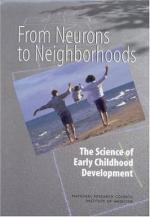|
This section contains 3,154 words (approx. 11 pages at 300 words per page) |

|
Blocking is a classical conditioning phenomenon that has profoundly influenced thinking about associative learning. This article will discuss the key characteristics of blocking and the role it may play in several mammalian brain systems in regulating particular types of learning.
Introduction and Significance
Classical or Pavlovian conditioning is an elementary form of associative learning—systematically described by a Russian physiologist Ivan Pavlov in the early twentieth century—that is considered an essential building block for complex learning. Typically, classical conditioning occurs when an initially neutral stimulus (conditional stimulus, CS) is paired in close temporal proximity (or contiguously) with a biologically significant stimulus (unconditional stimulus, US) that elicits an unlearned, reflexive behavior (unconditional response, UR). Through CS-US association formation, the animal acquires a behavior (conditional response, CR) to the CS that typically resembles the UR (but not...
|
This section contains 3,154 words (approx. 11 pages at 300 words per page) |

|


